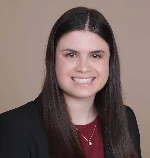1082 - Curative-Intent Photon Reirradiation for Local-Regional Breast Cancer Recurrence
Presenter(s)

M. A. Chakraborty1, C. White2, Z. Zhang2, L. Z. Braunstein3, Q. LaPlant3, A. J. Xu3, J. J. Cuaron3, M. B. Bernstein4, B. McCormick3, S. N. Powell3, A. J. Khan3, and I. J. Choi3; 1Rutgers New Jersey Medical School, Newark, NJ, 2Department of Epidemiology and Biostatistics, Memorial Sloan Kettering Cancer Center, New York, NY, 3Department of Radiation Oncology, Memorial Sloan Kettering Cancer Center, New York, NY, 4Memorial Sloan Kettering Cancer Center, New York, NY
Purpose/Objective(s): Reirradiation (reRT) for isolated local-regional recurrence (iLRR) of breast cancer has been used sparingly due to concerns for severe toxicities from high cumulative doses to organs-at-risk. We hypothesize that curative-intent reRT for iLRR is feasible with high rates of disease control and acceptable toxicity.
Materials/Methods: Breast cancer patients with iLRR treated from 2009-2023 with curative-intent non-PBI photon reRT and with dose overlap from prior radiotherapy (RT) courses were identified. Clinicopathologic features, treatment details, and clinical outcomes were collected. Overall survival (OS) and time to local (LR), regional (RR), and distant recurrence (DR) were estimated using the Kaplan-Meier method and cumulative incidence function, respectively. Logistic regression was used to assess associations between adverse events (AEs) (CTCAEv5.0) and relevant variables.
Results: A total of 101 consecutive patients were identified with a median age of 65 years (39-88). Median first (C1), reRT (C2), and cumulative RT doses were 52.4 Gy, 50.0 Gy, and 102.0 Gy, respectively. Median time between RT courses was 96 months (7-361). For C1, most received breast (WB)/chest wall (CW) RT without lymph node (LN) RT (88.1%). For C2, 58.4% received WB/CW + regional nodal irradiation (RNI), 25.7% had partial LN RT +/- WB/CW, and 12.9% received breast-only RT. ReRT was delivered with 3DCRT in 33%, IMRT/VMAT 67%.
The median follow-up was 63 months (95% CI: 55-69). The 5-year LR, RR, and DR rates were 5.6% (95% CI: 2.0%-12.0%), 8.9% (95% CI: 4.1%-16%), and 27.0% (95% CI: 18.0%-37.0%), respectively. Longer interval between RT courses (p=0.045) was associated with lower LR risk; LVI at C2 (p=0.039), stage II disease (p<0.001) and LN RT (p=0.002) at C1 with higher DR risk; LVI at C2 (p=0.026), N1 (p=0.032) and stage III (p=0.048) disease at C1 with worse OS; higher C2 dose with better OS (p=0.029). Max acute AE grade (G) was 2 in 45.5% and G3 in 9.9% (dermatitis, n=9; CW pain: n=1). Max late AE was G2 in 37.6%, G3 in 16.8% (chronic wound, n=5; arm edema, n=2; wound infection, n=3; CW pain, n=1; fibrosis, n=3; RT pneumonitis, n=1; shoulder stiffness, n=1; telangiectasia, n=1), and G4 in 1% (CW osteonecrosis, n=1). Of 25 patients who had implant-based reconstruction (RC) at reRT, 39% and 22% developed Baker G3 and G4 capsular contracture, respectively; there were 6 reconstruction failures. Rib fracture developed in 9 patients (G1, n=3; G2, n=6). RNI at C2 (p=0.022) was associated with acute G2+ AE; higher C2 dose with acute G3+ AE (p=0.010); IMRT/VMAT for C2 (p=0.018) with late G2+ AE; positive margins (p=0.029), T3-4 disease (p=0.043), and LN RT at C1 (p=0.025) with late G3+ AE.Conclusion: To our knowledge, this is the largest report of non-hyperthermia curative-intent photon reRT for breast iLRR to date. Local-regional control was high, with a primary distant recurrence pattern. The rate of severe AEs was acceptable. Our study provides insights on key factors that can guide management in these complex scenarios.
